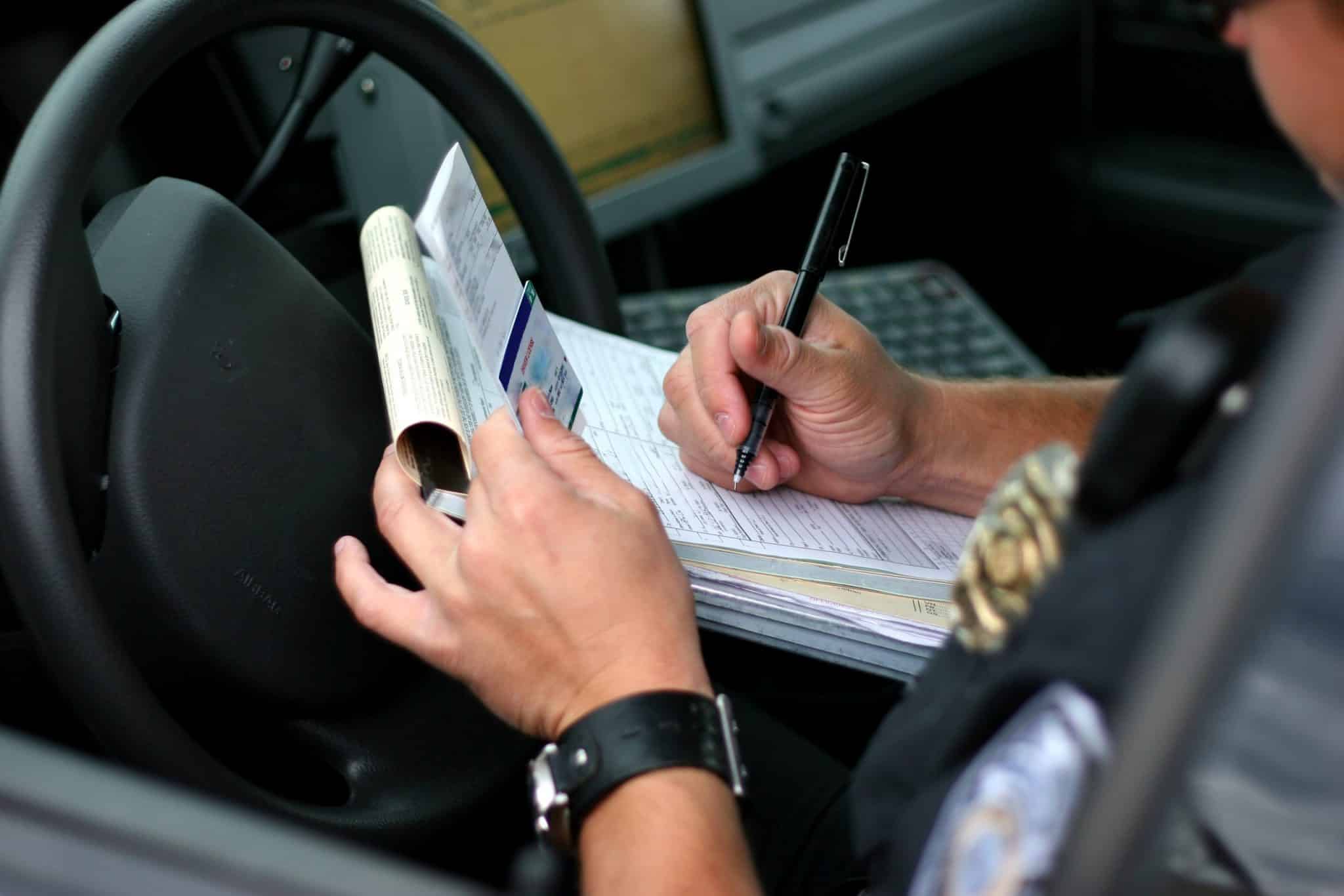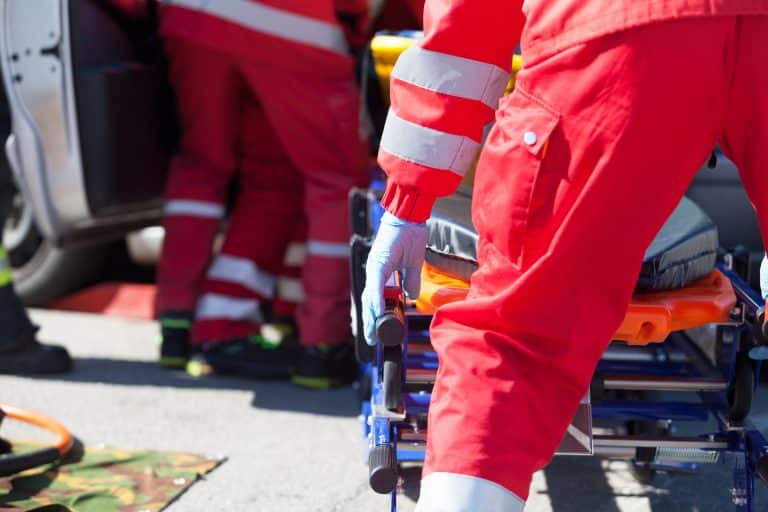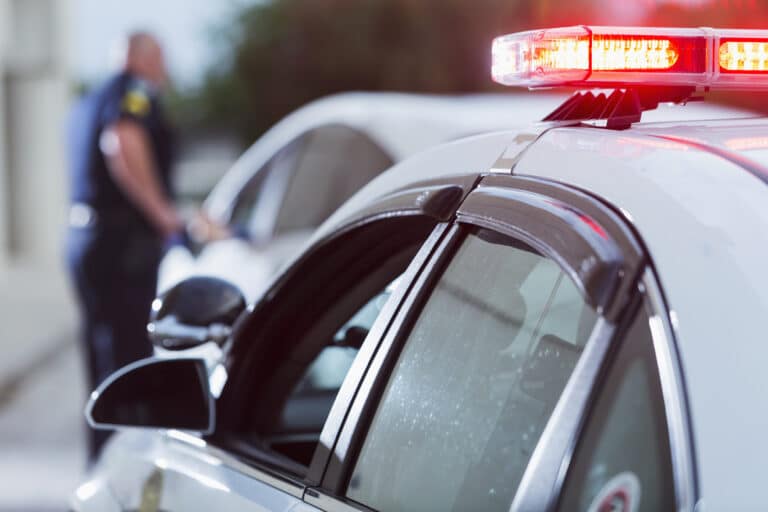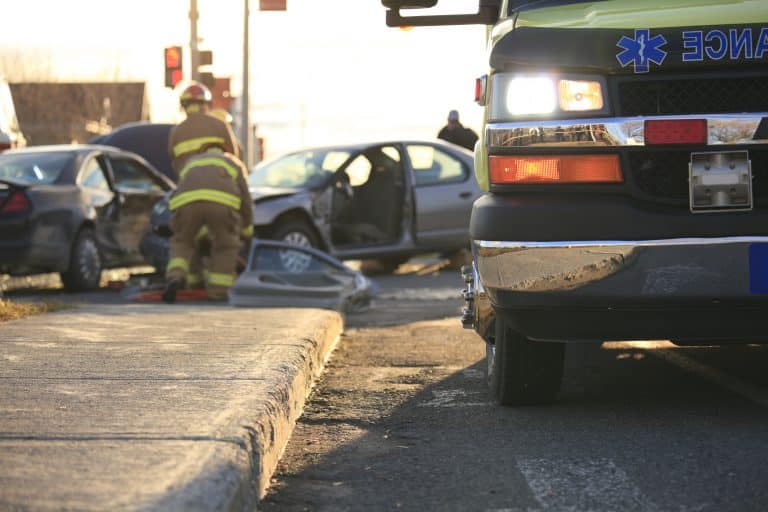When a car accident happens, especially when injuries are involved, police must make a detailed accounting of the events and document them in an accident report. This is a complex problem and can be a lot like putting together a jigsaw puzzle. By the end of the process, the accident report includes the officer’s determination as to who was at fault.
Police do not take this burden lightly. We understand that assessing fault can have an impact on how insurance covers the accident, as well as liability in a personal injury lawsuit. That’s why we always do our best to be as objective and factual as possible.
Walking through this process should give any driver who has been (or could later be) in an accident a better understanding of what the officer on the scene is aiming for and why he or she has drawn his or her conclusions.
Getting the Call
Sorting out the information starts the moment we get the call from dispatch that there has been an accident. In NY, there’s a call center that takes these kinds of emergency calls and gives them to the dispatch. From dispatch, it comes to us.
The information is often sparse and right off the bat we have to ask questions. The dispatch can often say if there has been some kind of injury, but they don’t give specifics. It is up to police to determine the severity of the injury when we get to the scene.
Addressing Injuries
The first thing we assess is whether or not anyone is injured. If there are no injuries we try to move the vehicles out of the way of general traffic. However, when there are injuries, we leave the vehicles as is and attend to the victims.
If emergency medical services (EMS) have not arrived on the scene yet, the officer has to determine who needs the most urgent medical attention. Police are trained to administer first aid, but moderate to severe injuries require an ambulance. We can apply pressure to cuts and handle similar minor injuries, but we won’t try to attend to something that requires paramedic or other higher-level medical skills, such as a broken bone. The only serious medical matter an officer will handle is to perform CPR.
Getting ID and Statements
After addressing injuries, we then have to get as much information as possible. Hopefully, all parties in the vehicles are coherent and able to give statements. We always start by getting the license of every driver. We may also ask for the registration, although this information can be looked up on a computer if need be.
If a person cannot be moved or is being treated by EMS, we will find other ways to get identification. For example, I may take a purse from the car and ask a woman if I can search it for her ID.
Then we start getting statements. If someone cannot communicate or has already been sent to the hospital, then we will have to follow up with them there if we can.
Passengers and Witnesses
When there are passengers in one or more of the vehicles, we need statements from them too. Every single passenger has to testify. Witnesses—bystanders or drivers who saw but weren’t involved in the accident—are also important, especially if there is a serious accident.
Other Information
The accident report will also include any details that are clear from the accident scene. This includes which way each car seemed to be going, if there was a traffic light or stop sign, etc. Skid marks might tell us if speed was a factor and how much.
If one or more vehicles can’t be driven, we also need to document the name and contact information of the towing company. In New York City, we use a round-robin system with several towing companies, but the highways have their own contracts with the state. Either way, we have the means to figure out who will be taking the vehicles.
Refusing to Give a Statement
Sometimes people don’t want to give a statement to a police officer for the accident report. If you refused to give a statement to a police officer after an accident, that’s ok--you have the right to refuse! The officer can simply write on the report that the driver or passenger refused to give a statement.
This does not necessarily affect your liability in the accident. The officer will still find a way to make an assessment of fault based on what information he or she has.
I remember one accident I attended where an adult female and an adolescent teen were involved in a T-bone crash. It was pretty clear at the outset that the teen was at fault. However, the woman still didn’t want to talk. In fact, she spent a lot of time at the scene on the phone trying to get in touch with her lawyer to see what she would be advised to say.
This is understandable. Every person knows that anything they say will be documented. It is natural to be concerned that, by saying the wrong thing, they can be found to be at fault.
At the same time, you can sometimes give a statement and then retract it.
From my experience, people try to change the report by about 20% of the time. A lot of times they may claim, “I didn’t say that!” For example, the report might state that one driver cut the light or didn’t stop at the stop sign. Then they see that the report indicates that they are at fault and they try to change it.
Rarely, however, will we change the report—99% of the time the original report and assessment of fault is the one we stand by.
There are some outlier situations when an officer will realize his or her report is inaccurate. That has happened to me once in my career. There was an accident and one driver said the other driver didn’t stop. So I returned to the scene. The accident happened after a stoplight. Looking at the grade of the road and the distance from the light, I realized the other driver likely did not stop. So I amended that report. But that is the exception, not the rule.
If you think your accident report is inaccurate, calmly speak to the officer and see if you can resolve the matter.
Red Flags
We understand when a person does not want to give a statement. However, everyone must give us ID if they can. Anytime someone doesn’t want to give a name or gives us a false name, that’s a red flag.
In such cases, we can run the registration of the vehicle to see who it belongs to. If the data that comes up matches the driver—height, hair color, eyes, etc.—then you can go to the next step and run the license as well. That will show us any traffic convictions the motorist might have had. Then we’ll mention these to see what his or her reaction is to see if we are talking to the right person.
While this is not a good sign, it’s also not a guarantee that we’ll find the person who is being evasive at fault. When you deal with the public so much, you have that B.S. radar up all the time. As police, we come to realize that this is just how some people are, and it doesn’t necessarily affect the facts of the accident. The person who is at fault is at fault regardless.
Complications
While some accident reports are open-and-shut scenarios, every accident is different and there are a lot of things that can complicate matters.
Being in an accident is stressful for everyone, especially when other people are hurt. A lot of drivers start to panic and can’t seem to give a coherent statement. If someone is distraught, the officer will need to calm them down as best he or she can. The best tactic is to take the person away from the scene—maybe 30 yards away. Then he or she may be able to calm down.
Single-vehicle accidents are also unique. Now there is only one driver. There isn’t another driver to take some or all of the blame, so the person who crashed knows the spotlight is on him or her. This person isn’t going to admit he or she was distracted, for example, so the officer might have to look at a cell phone to see if that was a factor.
The driver might claim there was a pothole that caused the car to careen, and if there is, then the city or town could bear the bulk of the liability. Other times, the driver, knowing no one is around to contradict him, might concoct a lie, such as he was trying to avoid a pedestrian. In that case, you have to ask, “What did the pedestrian look like?” If he can’t answer, then you know this isn’t honest.
Another challenge comes when EMS shows up first and rushes both drivers to the hospital. In this kind of case, I still have to do the investigation even though neither driver is there.
These kinds of situations may take longer to complete the report. For example, I still need to get statements from both drivers if they are able to give it. That means waiting for one or both victims to regain consciousness or come out of surgery.
If you’ve been in a severe accident and were rushed to the hospital before speaking to police, don’t worry. In most cases, the officer will follow up with you. And if for any reason the accident report is released with your statement, you can still add it. After all, as an injured person, your input on the report matters so don’t hesitate to reach out to the officer after the fact.
Sadly, sometimes one or both motorists will die in a crash. When that happens, we rely as much on other information as we can, especially witnesses.
Other complications include lab tests. An officer might complete a report and then, a few days later, a blood test will show alcohol in one of the drivers. This is a situation in which I would amend a report.
As an officer, you have to be certain of your assessment—at least as certain as humanly possible. These are sometimes life or death situations, so the investigation has to be sharp.
Not to mention, there’s real liability associated with that report. Any civil lawsuit stemming from that accident will lean heavily on the report. Every detail matters. Does the city bear some blame? For example, was a pothole or an obstructed sign a factor? The answer can make or break a lawsuit.
Influence of Drugs and Alcohol
Police have pretty strong procedures for determining if a person is intoxicated. However, if a person is under the influence of drugs, things become more difficult. You can’t always tell if a person is on drugs or suffering from some other malady. Bloodshot eyes and dilated pupils are a clue, but you usually need more than that.
If a police officer ever puts something like that on an accident report, he or she needs to be able to back it up. A defense attorney is likely going to scrutinize this claim very closely, and you have to make sure that you can explain the conclusion, the evidence that led you to it, and demonstrate that you have the experience necessary to justify it.
Fraud
While we never assume this at first, some car accidents do happen on purpose. Some years ago there were serious insurance scam rings in the five boroughs. Police would be called to a seemingly minor accident, a simple fender-bender. There could be as many as five occupants in the car, who would then head over to a doctor’s office in the area. This doctor would give each driver some cash—maybe $50 or $100 each—and then bill the insurance company for thousands. That’s a serious crime!
Police are now trained very specifically to be mindful of suspicious situations.
Notification of Death
One of the worst parts of any accident is notifying the next of kin. To do that, you have to go through a person’s ID or perhaps the vehicle registration to find an address. Then you can approach the residence to try to find another person who lives at that address.
If the person is from out of state, you have to call the local police and have them do the notification. Regardless, this is a very stressful responsibility. And there’s nothing you can do to mentally prepare for it. You just do it and learn from it. Police have to develop thick skin to deal with such emotionally difficult roles, and the ability to do so grows with you over time.
A Note on Injuries
It’s important to realize that the person who is the most injured isn’t necessarily the least at fault. So, if you’ve been in an accident and the other person is more seriously injured, that does not mean you can’t sue. The question of fault lies with the facts, regardless of who is hurt and how much.
It’s also worth noting that the level of injuries can be surprising given the situation. I’ve seen accidents where both cars flip and neither person has more than a few scrapes. Other times, the vehicles don’t look so bad but there’s blood everywhere.
Accidents involving serious physical injuries are rarely the same unless the location is a factor. There was an intersection in Queens where there were so many accidents. At the intersection, there were two sets of lights not far from each other, but the closer set was obscured by signs. People would often run through the first set not realizing they had run a light. We started to see a lot of accidents that were very similar in that area until the city managed to move the signs.
Putting it All Together
Putting together an accident report is like doing a jigsaw puzzle. It can take six to eight hours to get all the information you need, or it could take 20 minutes. If there are serious injuries, it’s usually longer, especially if someone dies.
However, there has never been a situation where you can’t figure out who is at fault. Every accident is different because people are different, seasons are different, cars are different. As different as it can be, the procedure is the same. And with experience, an officer will almost always put the facts together.





